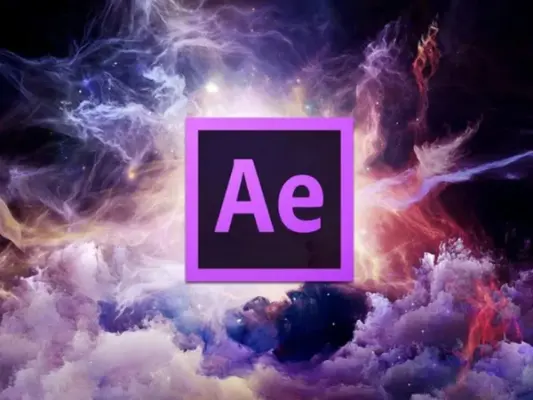
As the world of motion design continues to evolve, Adobe After Effects (AE) is at the forefront of innovation, introducing groundbreaking 3D features that promise to redefine the creative landscape. With the latest advancements, motion designers now have the ability to render beautiful 3D motion graphics with unparalleled quality, thanks to the introduction of the Advanced 3D Renderer. This performance-oriented composition renderer not only enhances the visual fidelity of 3D compositions but also opens up new creative possibilities for designers.
The Advanced 3D Renderer: A Leap Forward in Quality and Performance
The Advanced 3D Renderer is built on a high-quality, GPU-based, and performance-oriented composition renderer. It stands out as the only native renderer capable of rendering 3D models in After Effects, offering a significant leap in rendering capabilities. This renderer’s underlying engine is shared with other Adobe and Substance products, utilizing Adobe Standard Material properties for physically-based rendering. This integration ensures that any solids, precomps, text, and shape layers with the 3D switch activated in After Effects are now textured and rendered with Adobe Standard Material for more accurate and photographic looks .
High-Quality Antialiasing and Transparency
One of the standout features of the Advanced 3D Renderer is its ability to render 3D motion graphics with high-quality antialiasing and transparency. This level of detail and clarity is crucial for creating realistic and visually appealing 3D compositions. The renderer supports imported 3D models in GLTF, GLB, and OBJ formats, allowing designers to work with a wide range of 3D assets .
Image-Based Lighting and Shadows
The Advanced 3D Renderer also introduces image-based environment lights and shadows, using High Dynamic Range Image (HDRI) files. This feature allows designers to create realistic lighting, reflections, and shadows in their 3D scenes, enhancing the depth and dimension of their compositions. A simple change of an HDR environment source can completely transform the look of a scene, offering designers unprecedented control over the lighting and atmosphere of their projects .
Physically-Based Rendering for Realism
Physically-based rendering (PBR) is at the heart of the Advanced 3D Renderer’s capabilities. PBR simulates the physics of real-world lighting models, resulting in more realistic and photorealistic renders. This approach ensures that 3D models and other 3D layers are rendered in a unified space, with materials for 3D layers such as text, shapes, and solids being rendered with Adobe Standard Material for a real-world look and feel .
Enhancing Workflow with Advanced 3D Renderer
The Advanced 3D Renderer is not just about rendering; it also significantly improves the workflow for motion designers. With features like Draft 3D, designers can access a ground plane and extended viewer, greatly speeding up the previewing of 3D changes in compositions. This is particularly beneficial for setting up complex 3D scenes with multiple elements. The renderer also supports smooth scrubbing through the timeline of imported and rendered 3D models, even at high resolution, allowing for quicker iteration and refinement of 3D compositions .
The Future of 3D in After Effects
The introduction of the Advanced 3D Renderer in Adobe After Effects marks a significant milestone in the evolution of motion design. With its enhanced rendering capabilities, support for physically-based materials, and the ability to create realistic lighting and shadows, this new feature offers motion designers unprecedented creative freedom and control. As we look forward to the future of motion design, the Advanced 3D Renderer stands as a testament to Adobe’s commitment to pushing the boundaries of what’s possible in the creative process.
Connected 3D Workflows and Adobe Substance 3D Collection
Adobe is also showcasing new connected 3D workflows between After Effects and the Adobe Substance 3D Collection. This integration enables motion designers to easily create seamless PBR materials and apply them to 3D models for use in After Effects. Substance 3D includes nearly 20,000 3D models, parametric materials, and HDR environments that can take 3D motion design projects from ordinary to extraordinary. This collaboration not only enhances the capabilities of After Effects but also opens up a vast library of resources for designers to explore and utilize in their projects .
Experimenting with New 3D Features in the Beta Version
For those eager to dive into the future of 3D in After Effects, Adobe offers the opportunity to experiment with additional 3D features such as the ability to cast shadows of various colors and extract depth data to match camera settings through the After Effects beta version. By joining the beta, designers can share their feedback to help shape these features and the future of After Effects, ensuring that the tool continues to evolve in response to the needs of the creative community .
Conclusion: A New Dawn for Motion Design
The introduction of the Advanced 3D Renderer in Adobe After Effects marks a significant milestone in the evolution of motion design. With its enhanced rendering capabilities, support for physically-based materials, and the ability to create realistic lighting and shadows, this new feature offers motion designers unprecedented creative freedom and control. As we look forward to the future of motion design, the Advanced 3D Renderer stands as a testament to Adobe’s commitment to pushing the boundaries of what’s possible in the creative process.
Join us as we explore the new horizons of 3D in Adobe After Effects, where creativity knows no bounds.